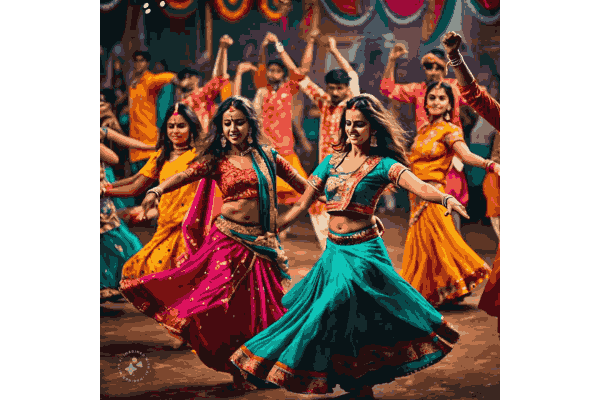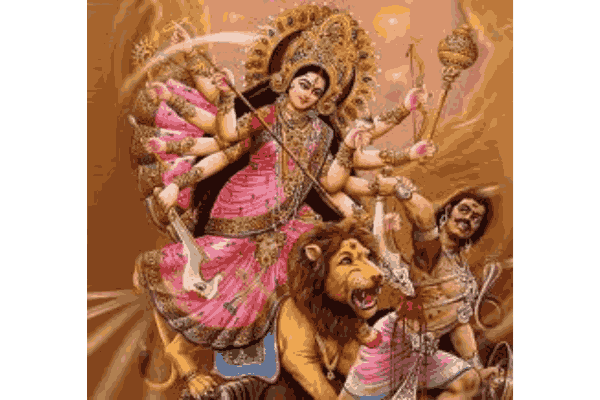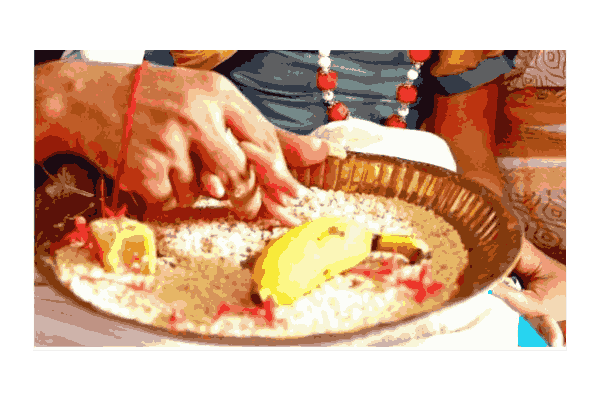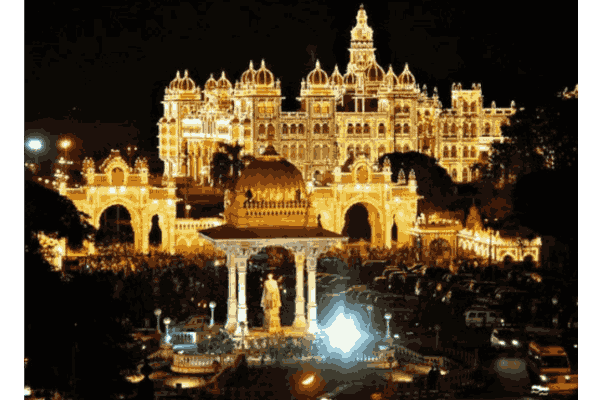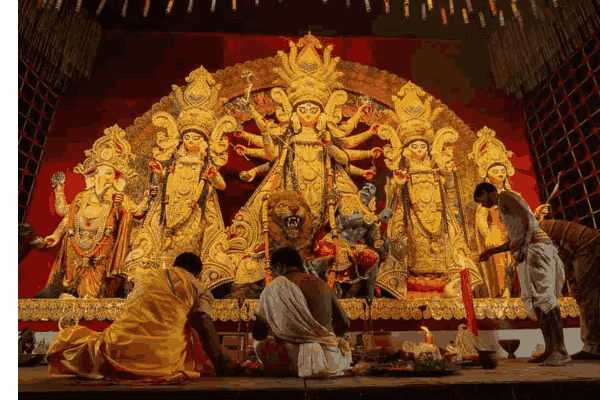Blog
Navaratri Celebrations Across India: A Cultural Journey Through Diverse Traditions and Festivities
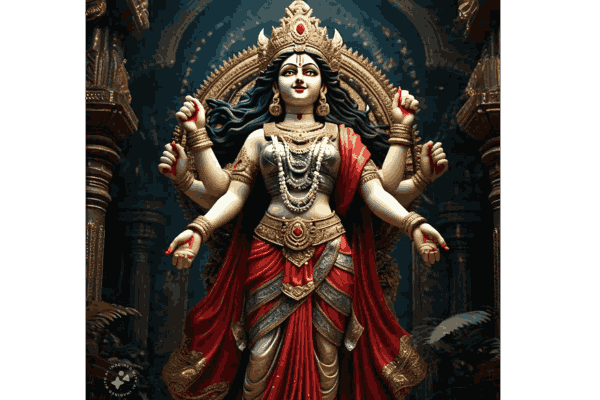
Celebrate the Divine Spirit of Navaratri – Rituals, Poojas, and Traditions for a Joyous Festival Experience
Navaratri is one of the most sacred and widely celebrated festivals in India, symbolizing the triumph of good over evil. The word Navaratri translates to “nine nights” in Sanskrit, and during this time, nine forms of Goddess Durga are worshipped, each representing different aspects of the divine feminine power. The festival culminates on the tenth day, known as Vijayadashami or Dussehra, which marks the victory of Goddess Durga over the demon Mahishasura and, in some traditions, Lord Rama’s victory over Ravana.
Navaratri is not only a celebration of divine power but also a time of intense spiritual reflection, fasting, and devotion. It is observed with immense reverence and joy across various states in India, each adding its unique traditions to the festival.
The Mythology Behind Navaratri: The Legend of Durga and Mahishasura
The story behind Navaratri is deeply rooted in Hindu mythology and the eternal battle between good and evil. According to the legend, Mahishasura, a demon blessed with a boon that made him nearly invincible, wreaked havoc on earth, heaven, and the netherworlds. His arrogance grew unchecked, and even the gods were unable to defeat him. To put an end to his tyranny, the supreme powers of the gods merged to form Goddess Durga, a formidable warrior goddess imbued with the strength of all the gods combined.
Riding a lion and armed with weapons, Durga fought Mahishasura in a battle that lasted for nine nights. On the tenth day, she slew the demon, restoring balance and peace to the universe. This victory of good over evil is celebrated as Vijayadashami or Dussehra.
While the primary focus of Navaratri is the battle between Durga and Mahishasura, the festival also celebrates other mythological tales, including Lord Rama’s defeat of Ravana and the worship of the Goddess in her various forms, each representing different virtues, such as valor, knowledge, and prosperity.
The Nine Days of Navaratri: Day-by-Day Worship and Rituals
Each day of Navaratri is dedicated to a distinct form of Durga, with specific rituals and prayers dedicated to that particular form. These nine forms are collectively known as Navadurga.
Day 1: Shailaputri (Daughter of the Mountains)
The first day of Navaratri is dedicated to Goddess Shailaputri, the manifestation of Durga as the daughter of the Himalayas. She symbolizes the strength and resolve needed to embark on a spiritual journey. Devotees perform Kalash Sthapana (Ghatasthapana) on this day, a sacred ritual symbolizing the beginning of the nine days of worship. The Kalash is filled with holy water, and mango leaves, a coconut, and turmeric are placed over it as offerings.
Color of the Day: Red
Significance: Physical strength, vitality, and stability
Day 2: Brahmacharini (The Ascetic Goddess)
On the second day, devotees worship Brahmacharini, the embodiment of penance and devotion. This form of Durga represents peace, purity, and wisdom. Devotees offer prayers seeking inner strength and spiritual knowledge.
Color of the Day: White
Significance: Devotion, meditation, and calmness
Day 3: Chandraghanta (The Warrior Goddess)
The third day is dedicated to Chandraghanta, who represents bravery and courage. Her name comes from the crescent moon (chandra) adorning her forehead, and she is seen as a fierce warrior goddess who fights against evil forces. On this day, devotees seek blessings for peace and prosperity.
Color of the Day: Yellow
Significance: Courage, protection, and warrior spirit
Day 4: Kushmanda (The Creator of the Universe)
On the fourth day, Goddess Kushmanda is worshipped. She is believed to have created the universe with her radiant smile. Her name is derived from “Ku” meaning little, “Ushma” meaning energy, and “Anda” meaning cosmic egg. Devotees pray to her for health, strength, and vitality.
Color of the Day: Green
Significance: Health, energy, and creation
Day 5: Skandamata (Mother of Skanda)
The fifth day honors Skandamata, the mother of Kartikeya (also known as Skanda), the god of war. Worshipping Skandamata is believed to lead to the fulfillment of all desires, and she represents motherhood and nurturing love.
Color of the Day: Grey
Significance: Motherhood, protection, and nurturing
Day 6: Katyayani (The Warrior Goddess)
On the sixth day, devotees worship Katyayani, who is one of the fiercest forms of Durga and is associated with strength and courage. Legend says she was born to the sage Katyayana to destroy the buffalo demon Mahishasura. Katyayani is revered as the goddess who fulfills the wishes of those seeking marriage and love.
Color of the Day: Orange
Significance: Courage, love, and determination
Day 7: Kalaratri (The Dark Night)
The seventh day is dedicated to Kalaratri, the most violent and fearsome form of Durga. She is known for her dark complexion and represents the destruction of all negativity and fear. Despite her terrifying appearance, she blesses her devotees with protection from evil.
Color of the Day: Blue
Significance: Protection from negativity and destruction of evil
Day 8: Mahagauri (The Radiant Goddess)
On the eighth day, Mahagauri, the goddess of purity and serenity, is worshipped. Her complexion is said to be as white as snow, and she represents calmness, tranquility, and compassion.
Color of the Day: Pink
Significance: Purity, peace, and wisdom
Day 9: Siddhidatri (The Goddess of Supernatural Powers)
The ninth and final day is dedicated to Siddhidatri, the goddess who grants wisdom and spiritual enlightenment. Worshippers believe she blesses her devotees with various forms of Siddhis (supernatural powers). On this day, many people perform the Kanya Pooja, where young girls, representing the goddess, are worshipped and offered food and gifts.
Color of the Day: Purple
Significance: Fulfillment, knowledge, and divine energy
Celebrating Navami and Vijayadashami in Kerala: A Unique Blend of Devotion and Tradition
Kerala celebrates Navaratri with great reverence, especially focusing on the worship of Saraswati, the goddess of knowledge. The festival is marked by unique rituals, especially during Navami and Vijayadashami.
- Navami in Kerala: On Maha Navami, Keralites observe the tradition of Ayudha Pooja, where tools, instruments, and vehicles are cleaned and decorated to be worshipped. In schools and homes, books, musical instruments, and educational tools are placed in front of an idol of Saraswati for Pooja Vayppu. These items are not touched for a day, and people seek the blessings of Saraswati for success in learning and knowledge.
- Vijayadashami in Kerala: On Vijayadashami, the final day of Navaratri, the Vidyarambham ceremony takes place. Children are initiated into the world of letters, marking the beginning of formal education. Parents bring their children to temples or homes, where priests or scholars write the first letters of the alphabet on their tongues or on a plate of rice, symbolizing the start of learning.
Popular temples like Thiruvullakkavu Temple and Chottanikkara Temple see large crowds during this period, as devotees flock to seek the blessings of Goddess Saraswati for intellectual and spiritual growth.
Dussehra Celebrations in Mysore, Karnataka: A Grand Spectacle of Royal Tradition
In Karnataka, especially in Mysore, Dussehra is celebrated as a grand royal festival. Known as Dasara, the celebrations here are steeped in tradition and history. Mysore Dussehra is considered one of the most magnificent and oldest celebrations in India.
- The Mysore Palace is the epicenter of the Dussehra festivities, where the entire palace is illuminated with over 100,000 lights, creating a mesmerizing sight. The royal family of Mysore plays a significant role in the celebrations, and the famous Jumbo Savari, a grand procession of decorated elephants, is a highlight on Vijayadashami. This grand parade symbolizes the victory of good over evil, with the royal elephant carrying the idol of Goddess Chamundeshwari, the presiding deity of Mysore.
- The Chamundi Hill: Another important ritual involves the worship of Goddess Chamundeshwari at the Chamundi Temple atop the Chamundi Hill. The temple, dedicated to the goddess who slayed the demon Mahishasura, is thronged with devotees who seek blessings for courage, strength, and protection.
The Mysore Dussehra festivities attract visitors from across the world, showcasing the royal heritage and cultural richness of Karnataka. Music, dance performances, and a grand fair add to the festival’s charm, making it a spectacle of grandeur and devotion.
Special Poojas and Rituals Across India During Navaratri
Navaratri is celebrated differently across India, with each region adding its own unique traditions and rituals to the festival. Here’s a look at how different states celebrate Navaratri:
1. Gujarat: Garba and Dandiya Raas
In Gujarat, Navaratri is celebrated with great fervor, characterized by vibrant dance forms known as Garba and Dandiya Raas. This nine-night festival honors the goddess Durga, embodying the divine feminine energy.
Garba is a folk dance performed in circles, where participants clap their hands and dance to the rhythm of traditional music, often accompanied by live bands. The dance symbolizes the celebration of life and energy, fostering a sense of community and togetherness. Dressed in colorful traditional attire, particularly women wearing chaniya cholis adorned with mirrors and intricate embroidery, participants engage in joyful dance, expressing devotion to the goddess.
Dandiya Raas, another essential aspect of the Navaratri celebration, involves the use of decorative sticks called dandiya, which dancers use to rhythmically tap against each other’s sticks while dancing in pairs. The dance often tells stories of love and celebration, reflecting the cultural richness of Gujarat. Both Garba and Dandiya Raas typically take place in open spaces, such as community grounds or temples, where large groups gather to dance late into the night.
The festival also includes nightly aarti and prayers to the goddess, along with elaborate decorations in homes and public spaces. Many communities host large gatherings, complete with stalls offering delicious traditional food and sweets, enhancing the festive atmosphere.
As the festival culminates on Vijaya Dashami, the energy of the dances shifts to an emotional farewell, symbolizing the goddess’s return to her celestial home. The celebration of Navaratri in Gujarat not only showcases the region’s rich cultural heritage but also strengthens community bonds, making it a joyous and unforgettable experience for participants and onlookers alike.
2. West Bengal: Durga Puja
In West Bengal, Durga Puja is the most significant and widely celebrated festival, honoring Goddess Durga and her victory over the buffalo demon Mahishasura. This grand event, held over five days in the autumn, is not only a religious observance but also a vibrant cultural celebration.
The festival typically begins on Mahalaya, marking the invocation of Goddess Durga. Elaborately crafted idols of Durga, along with her children—Lakshmi, Saraswati, Kartik, and Ganesha—are installed in beautifully decorated pandals (temporary structures). These pandals, often funded by local communities or businesses, compete for creativity, ranging from traditional designs to those depicting modern themes.
The main days of Durga Puja—Saptami, Ashtami, Navami, and Dashami—are filled with rituals, prayers, and cultural activities. Priests perform the Anjali (offering of prayers) and Aarti, while devotees gather to seek blessings. Kumari Puja, where young girls are worshipped as embodiments of the goddess, is another important ritual.
Evenings are lively with cultural programs, music, and dance performances, while streets are filled with people visiting various pandals, admiring the art and soaking in the festive atmosphere. Families and friends indulge in feasting, with local delicacies like bhog, a communal offering of food, being distributed at the pandals.
The festival culminates on Vijaya Dashami, when the idols are taken in grand processions and immersed in rivers or lakes. This ritual, known as Visarjan, symbolizes the return of Goddess Durga to her heavenly abode, and the city bids her a tearful farewell with chants of “Asche Bochor Abar Hobe” (She will return next year).
Durga Puja is not just a religious festival in West Bengal; it is a celebration of art, culture, and community, bringing people together in joy and devotion.
3. Tamil Nadu and Karnataka: Golu
In South India, particularly in Tamil Nadu and Karnataka, Navaratri is celebrated with the arrangement of Golu, an artistic display of dolls and idols on steps. These dolls represent gods, saints, animals, and scenes from everyday life. Each day, families invite friends and relatives to view the Golu display, sing devotional songs, and share festive foods.
4. Maharashtra: Community Poojas
In Maharashtra, Navaratri is celebrated with vibrant traditions, honoring Goddess Durga over nine nights. A key feature of the festival is the lively performance of Garba and Dandiya Raas, where people gather in colorful attire to dance to the rhythm of traditional music, creating a festive atmosphere.
Mahalaya marks the beginning of the celebration, with families invoking the goddess through rituals and adorning homes with rangoli designs. Daily puja and aarti are performed, and many households set up Golu, showcasing idols and figurines.
The festival culminates on Vijaya Dashami, when the idols of Goddess Durga are immersed in water bodies, symbolizing her return to her celestial abode. This day features processions filled with music and dance, providing a joyful farewell to the goddess. Overall, Navaratri in Maharashtra is a time of community bonding, cultural expression, and spiritual devotion.
5. Northern India: Ramlila and Dussehra
In Northern India, the celebration of Navaratri, particularly in regions like Uttar Pradesh, Uttarakhand, and Delhi, is marked by the vibrant performance of Ramlila. This dramatic reenactment of the ancient epic, the Ramayana, focuses on the life and deeds of Lord Rama, an avatar of the god Vishnu. Ramlila spans several days, typically during the nine nights of Navaratri, with the grandest performances held during the final days leading to Dussehra.
Ramlila is more than just a play—it is a communal and religious activity, bringing together entire communities to relive the moral and spiritual lessons of the Ramayana. Different scenes are performed each day, with episodes ranging from the birth of Rama, his exile, the abduction of his wife Sita by Ravana, to the eventual battle between Rama and Ravana.
Performances of Ramlila can be simple street plays in villages or grand spectacles in cities, with elaborate costumes, sets, and even fireworks. Traditionally, many of the actors are local community members, with the role of Rama often played by a young boy. Music, folk songs, and dialogues in the local dialect enhance the authenticity of the performances. In larger cities, the enactments are grander, with professional actors, lights, and sound effects.
As the festival reaches its climax on Dussehra, also known as Vijayadashami, the symbolic victory of good over evil is celebrated with the burning of huge effigies of Ravana, his son Meghnath, and his brother Kumbhakarna. These effigies are often 20-50 feet tall and stuffed with firecrackers. They are set ablaze in public grounds amidst great fanfare, symbolizing Lord Rama’s triumph over Ravana, the demon king of Lanka, who had kidnapped Sita. The burning of the effigies is accompanied by cheers, chants, and joyous celebrations, reminding people of the power of righteousness and virtue.
The rituals and celebrations of Dussehra also mark the start of preparations for Diwali, the festival of lights, which occurs 20 days later to commemorate Rama’s return to Ayodhya after his victory over Ravana. For many in Northern India, this entire period from Navaratri to Diwali is filled with religious devotion, cultural pride, and community gatherings, reinforcing the teachings of dharma (righteousness) and the ultimate triumph of good over evil.
In addition to its religious significance, Ramlila and Dussehra serve as a time for social bonding, as families come together to watch the performances, and communities participate in various activities, fairs, and feasts.
How to Celebrate Navaratri at Home: Simple Rituals and Practices
Celebrating Navaratri at home allows individuals and families to experience the spiritual depth and joy of the festival. Here’s a step-by-step guide on how to observe Navaratri rituals at home:
- Kalash Sthapana: Begin by setting up a sacred space for the Kalash Sthapana. The Kalash (a sacred pot filled with water) is placed at the altar, symbolizing the presence of the goddess.
- Daily Pooja: Each day, offer fresh flowers, fruits, and food to the goddess. Light a diya (lamp) and incense sticks, and chant mantras dedicated to Durga, Lakshmi, and Saraswati.
- Fasting: Many devotees observe fasting during Navaratri, consuming only fruits, milk, and light vegetarian meals. Fasting is seen as a way to purify the body and mind.
- Kanya Pooja: On the ninth day, invite young girls to your home for Kanya Pooja. These girls, symbolizing the goddess, are offered food, gifts, and blessings.
- Participate in Community Celebrations: If possible, participate in local Garba or Dandiya events, Durga Pooja celebrations, or visit temples to be part of the collective devotion.
Special Poojas During Navaratri Across India
Navaratri is marked by various forms of poojas and rituals, depending on regional traditions:
- Durga Pooja (West Bengal): The most elaborate form of Navaratri celebration is in West Bengal, where Durga Pooja involves grand processions, massive idols of Goddess Durga, and elaborate rituals.
- Garba and Dandiya (Gujarat): In Gujarat, the entire state celebrates Navaratri with energetic Garba and Dandiya dances, where people worship Amba Maa (Durga) with music and dance.
- Bommai Golu (Tamil Nadu): In Tamil Nadu, the unique tradition of setting up Bommai Golu, a display of dolls and idols, marks the celebration of Navaratri. Special poojas are conducted every day, and people visit each other’s homes to admire the Golu displays.
- Ayudha Pooja (South India): In Karnataka, Tamil Nadu, and Kerala, Ayudha Pooja is performed on Navami, where tools, vehicles, and machines are cleaned, decorated, and worshipped.
The Spiritual Benefits of Navaratri: More Than Just a Festival
Navaratri is a spiritually enriching festival that offers several personal and spiritual benefits:
- Detoxification: Fasting during Navaratri helps detoxify the body, providing both physical and mental clarity.
- Spiritual Growth: The daily worship and rituals promote inner peace, patience, and a connection with the divine feminine.
- Rejuvenation: The positive energy generated by devotional activities rejuvenates the mind and soul, helping to overcome stress and negativity.
Celebrating Unity in Diversity Through Navaratri
Navaratri is a festival that transcends boundaries and unites people through its universal message of the triumph of good over evil. Whether it’s the vibrant dances of Gujarat, the grand Dussehra in Mysore, or the serene rituals in Kerala, each region adds its unique flavor to the celebration. By participating in Navaratri, we not only celebrate the divine feminine but also reflect on our own inner strengths and virtues.
As the nine nights of devotion unfold, let us immerse ourselves in the spiritual energy of Navaratri, seeking blessings for health, prosperity, and wisdom.
Navaratri is a time to connect with the divine feminine power, celebrate the victory of good over evil, and invoke inner strength and wisdom. Whether through fasting, meditation, dance, or prayer, each day of this festival allows us to honor different aspects of Goddess Durga. As you partake in the rituals and traditions, remember that Navaratri is not just a festival but a spiritual journey toward enlightenment, protection, and fulfillment.
By understanding the deep mythological significance and following the daily rituals, you can immerse yourself fully in the essence of Navaratri. No matter how you choose to celebrate—whether at home, in a community gathering, or through regional customs—embrace the joy, spirituality, and renewal this festival brings.
This Navaratri, take the opportunity to transform your home into a sanctuary of divine energy. Begin your celebrations with Kalash Sthapana, perform daily poojas, chant mantras, and offer prayers to each form of the Goddess. Light lamps, decorate your home with flowers, and immerse yourself in the stories of Durga’s triumph over evil.
Make this Navaratri a time of spiritual reflection and rejuvenation. Share the joy of the festival with your loved ones, participate in cultural events, and take a step toward spiritual growth. Let the Goddess’s blessings bring peace, happiness, and prosperity into your life.
Explore a wide range of traditional pooja items, brass idols, and decorative artifacts to enhance your Navaratri celebrations. Visit www.tamrata.com and bring home divine grace this festive season. Shop Now for exclusive Navaratri offers and make your celebration even more special.
Embrace the power of devotion—celebrate Navaratri with purity, love, and dedication!

